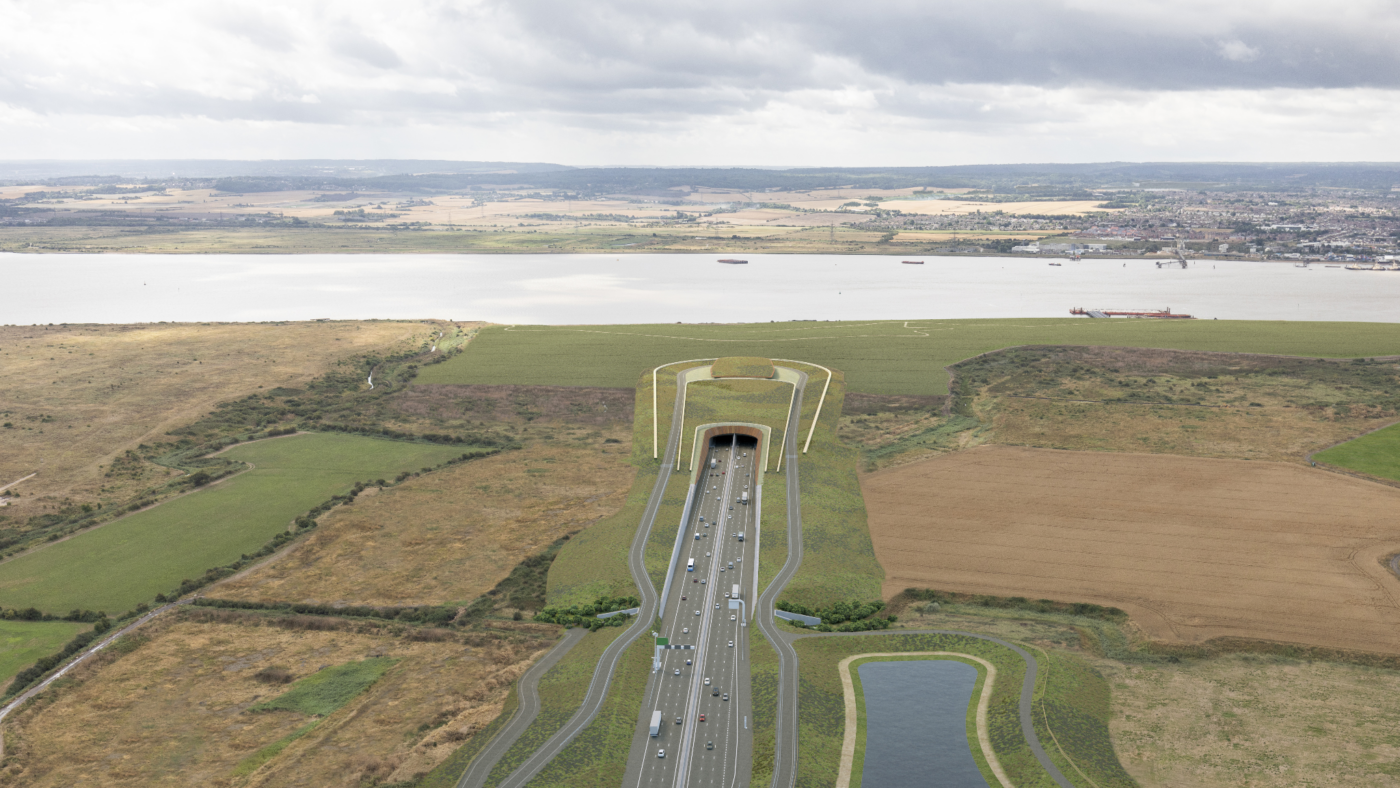There’s only one way to cross the Thames east of London today. Unsurprisingly, this makes the Dartford Crossing is one of the most congested roads in Britain. While it was designed for 135,000 vehicles a day, it averages around 160,000, and on the busiest days more than 200,000 vehicles drive (slowly) over this essential piece of infrastructure. All this traffic causes delays for millions of motorists and HGVs every year and worsens the air quality around Dartford.
National Highways has been working for 15 years on a solution, the Lower Thames Crossing. This would be the longest road tunnel in the UK and help improve connections between Kent and Essex while also taking the strain off of Dartford. A new crossing is popular with locals too, more than 80% of nearby residents support building it. Yet while it was designated a national priority infrastructure project 13 years ago, spades still aren’t in the ground.
Instead of getting on and building this much needed crossing, National Highways has instead been forced to complete one of the largest planning applications in British history. New analysis from Britain Remade shows that National Highways has been forced to produce 359,866 pages.
This covers an incredibly wide range of topics from detailed maps about where newts might live to a list of disagreements National Highways has had with a Cambridge college.
To read all 94,534,273 words produced by National Highways, it would take a planning inspector nearly a year, provding they read for 24 hours a day without taking a break.
If you printed out all of those pages and stacked them up it would be 36 metres, as tall as eight double decker buses or nearly double the height of the Angel of the North. Laid end to end the paper trail would stretch 66 miles, almost five times longer than the road itself. Just printing out all of those pages would cost you £45,000 in ink.
But, the ink isn’t the only expense of this mammoth planning application. National Highways has spent more than £267m preparing the 2,383 separate documents that make up the planning application. And in the meantime the price of the crossing has ballooned too. Initially expected to cost £5.3bn, the Lower Thames Crossing is now expected to cost upwards of £9bn.
In Britain, £267m buys you one part of the government asking another part of the government whether it could maybe build a tunnel. In Norway, £267m is enough to actually build the world’s longest road tunnel, the Laerdal tunnel, and leave enough to also build the Eiksund Undersea Tunnel, which was the deepest undersea road tunnel in the world when it was built. The Laerdal Tunnel went from idea to construction starting in just 3 years, much faster than the current best case scenario of 17 years for the Lower Thames Crossing.
Across the world countries are building tunnels to improve connections not just cheaper than Britain does, but for far less than it costs for projects here to go through planning. Last month the Faroe Islands opened the 6 mile long Sandoy Tunnel linking two islands for only £99m.
Tunnelling through hard rock in a sparsely populated country is easier than tunnelling under the Thames – I don’t dispute that. But, we aren’t comparing tunnelling in Britain vs tunnelling in Norway or the Faroe Islands. We’re comparing merely getting permission to build a tunnel in Britain vs actually tunnelling in other countries.
Britain’s planning system adds needless delays and uncertainty to projects. Without having a firm idea of when or if construction could start, hiring construction workers and delivering the project becomes much harder. Private companies are less willing to invest in skills and equipment if they’re unsure whether this big road project will actually go ahead.
The mammoth application requires a large diversion of civil servants and planning lawyers away from designing future projects that could spur growth and towards filling out and refilling out hundreds of thousands of pages of paperwork. It is completely unreasonable to have a system that requires such huge amounts of effort to get a simple yes or no. Even if someone opposes the Lower Thames Crossing, it is surely madness to make it go through all of these hoops.
We need to make it easier for large infrastructure projects that Britain desperately needs to gain planning approval and get built. From new nuclear reactors and lab space to transport connections and much needed homes, the planning system is slowing down the British economy and pushing up costs. The senseless delays and hundreds of thousands of pages are holding us back.
Click here to subscribe to our daily briefing – the best pieces from CapX and across the web.
CapX depends on the generosity of its readers. If you value what we do, please consider making a donation.


